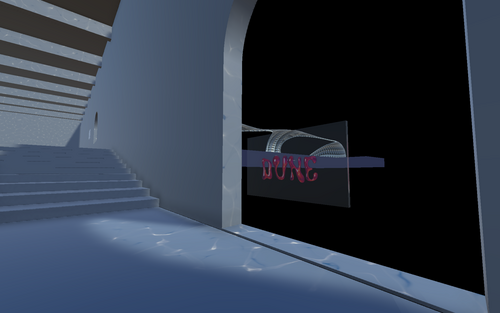Process DevLog

Embarking on this project marked a convergence of my passion for architecture and game design, a venture that demanded a meticulous approach to concept ideation and execution. The objective was clear: to construct a virtual space transcending the conventional gaming experience, offering a platform for profound self-reflection.
The meticulous crafting of textures and illusions played a pivotal role in achieving the desired atmospheric resonance. The target was to create a distinctive atmosphere, reminiscent of the Lynchian aesthetic. The successful implementation of heat-like outputs and distortion scenes validated the effectiveness of shader manipulation in achieving the desired visual impact. This phase served as a testament to the importance of aesthetic considerations in shaping the overall user experience.
The decision to implement hand tracking technology introduced a unique set of challenges. The struggle was not just technological but also conceptual—how to translate hand gestures into meaningful and enjoyable interactions within the space. Through iterative development and creative problem-solving, the integration of hand tracking technology eventually became a triumph, enriching the project with a layer of immersive interactivity.
A pivotal phase in the development process involved the utilization of OpenCV and the associated coding complexities. The challenge of making objects function as intended, especially as children of tracked points, necessitated a deep dive into code intricacies. Persistent debugging and problem-solving were crucial in overcoming challenges such as disappearing lines and unexpected renderings. This phase underscored the significance of a robust coding foundation for achieving project objectives.
Conducting playtesting sessions became an essential component of the development process. Time constraints limited the number of sessions, but the feedback gathered proved invaluable. Participants were prompted to interact with various hand gestures, providing insights into the effectiveness of the implemented features.
Participants entered the space with a palpable sense of curiosity, exploring the intricacies of the environment. The hand tracking feature, initially a source of uncertainty, proved to be a hit. Users were observed experimenting with different hand gestures, showcasing an inherent desire for interactive elements within the virtual realm. The aesthetic nuances crafted through shader manipulation also garnered attention, contributing to the immersive quality of the experience.
The feedback obtained from participants served as a compass for refining and enhancing various aspects of the project. Several users appreciated the innovative use of hand tracking, citing it as a compelling and immersive addition. The shader-driven visuals received praise for their atmospheric quality, successfully evoking the intended Lynchian ambiance. However, some participants voiced concerns about occasional inconsistencies in object interactions, emphasizing the importance of fluid and predictable virtual dynamics.
The development process yielded substantial insights into the symbiotic relationship between conceptualization, coding, and user experience. Mastery of coding emerged as a pivotal skill, enabling the translation of creative visions into functional reality. Playtesting feedback became a catalyst for iterative development, guiding refinements and enhancements to ensure a more engaging and user-centric experience.
Get Final
Final
Try to experience your feelings.
| Status | Released |
| Author | Vasiliki Hadzikosta |
More posts
- Postmortem DevLogDec 17, 2023
Leave a comment
Log in with itch.io to leave a comment.